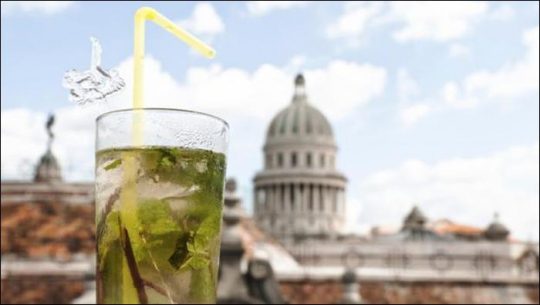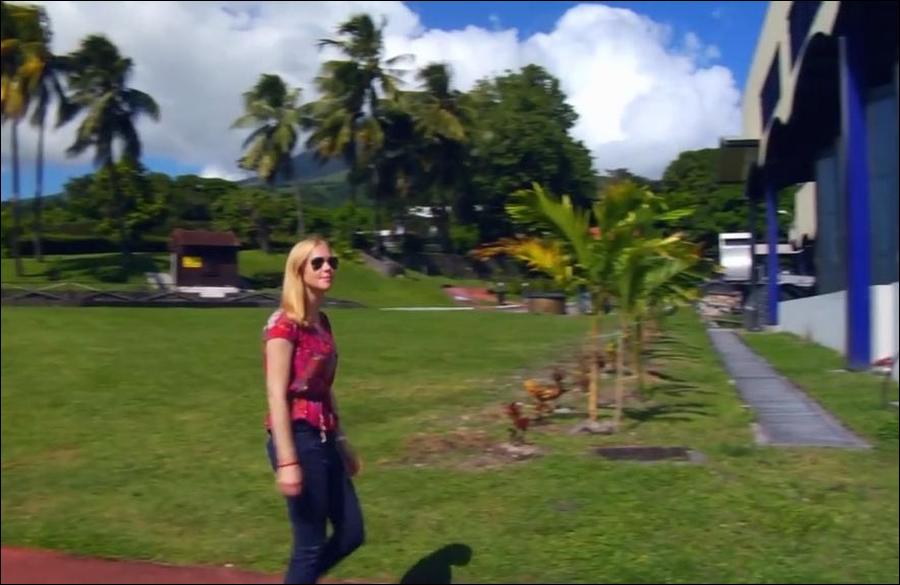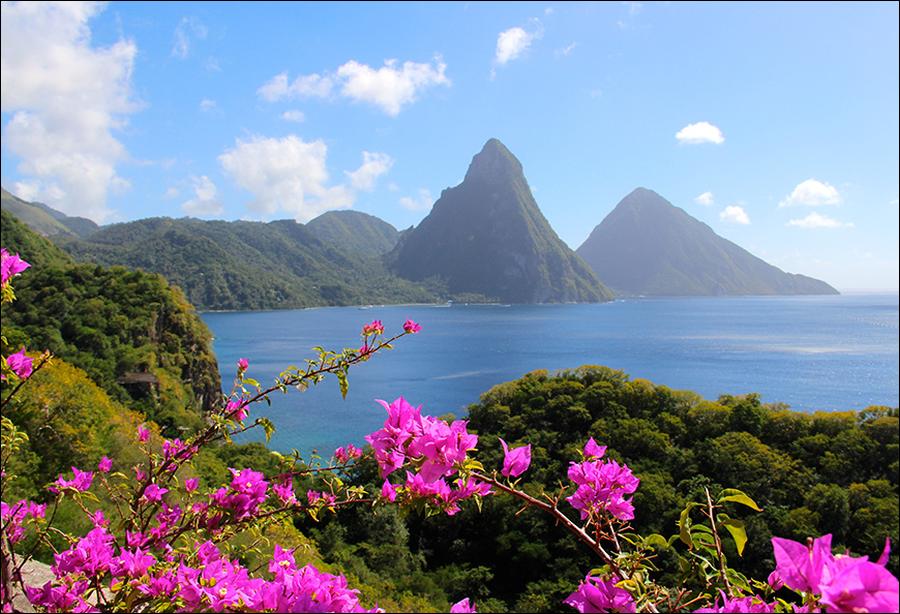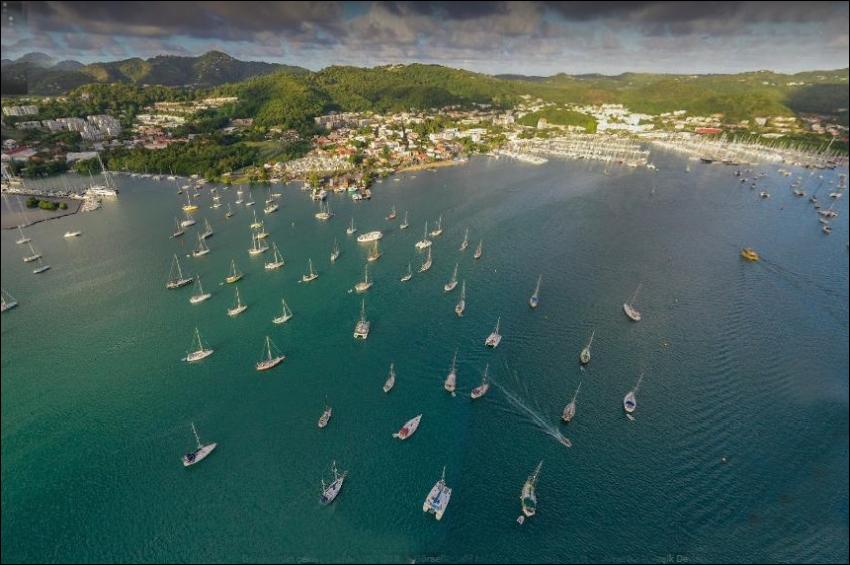Coming in from Cuba’s Jose Marti Airport, my taxi pulled up to a road filled with piles of rubble and deep cavernous holes. Street repairs, I soon discovered, were a common site in Old Havana.
“Lo siento [I’m sorry],” said my driver. “You’ll have to walk from here.” I thanked him, paid and hauled my suitcase along the dusty potholed street. It was dimly lit by a few old street lamps and framed by colourful tumbledown houses and once-graceful mansions in various states of disarray. Locals ambled their way around the holes, while loud reggaeton music blared from open doorways. I looked down at the address in my hand, walked over to a mint-green casa and rang the bell. After a few minutes the door opened.
“Hola, soy Kike [Hello, I’m Kike]. Welcome, I have been waiting for you.” My host was a smiley, tubby man dressed only in basketball shorts and flip-flops. It was past midnight and I felt bad about my late arrival, but Kike didn’t seem to mind. “Don’t worry, I’m used to it. I’ve been doing this for a long time,” he said.
I followed him upstairs to a modest apartment with a cosy living room, polished marble floors and an attractive colonial-style balcony overlooking the potholed street below. He showed me into a lovely rose-coloured room with intricate plasterwork on the ceiling and walls. It was basic and sparsely furnished, but contained everything I needed for a comfortable stay: a private bathroom with hot and cold water, a bed, air-con, and even a mini fridge and a safe.
When I’d first visited Cuba in 2012, it was difficult to arrange a casa particular (homestay) like this in advance. Most were spare rooms within a house, and few – if any – could be booked online since most Cubans don’t have internet access; calling on the phone and trying to reserve in Spanish was the only option. It was easiest to stay in state-owned or international hotels with their online booking systems; however most of these lacked the opportunity to learn more about local culture and residents’ way of life.
On my most recent trip, however, things had improved. In 2014, the Cuban government passed a law allowing Cubans to rent out whole apartments or houses, offering travellers more accommodation options and the chance to self-cater.
There’s also been a huge proliferation of third party room reservation sites, such as the Cuba Casa Particular Association, over the last few years, giving casa owners a new way to market their stays and making it easier for travellers to reserve online in advance.
Things became even easier still in April 2015, when Airbnb announced that they were starting to operate in the country, allowing people to book – and pay – online, instead of just reserving a room and paying on arrival, like most third party sites. And it’s set to be popular too, with more 1,000 listings already. It’s a well-timed development given the expected influx of US travellers who, since December, are legally able to visit Cuba on one of 12 US-government approved categories of travel.
“Is it easy to set up a casa particular?” I asked Kike when we were sitting comfortably in his living room, the soft lull of the TV in the background. “Easy?” he turned to look at me. “Yes it’s easy. What’s difficult is running it. Because of the rationing and restrictions, simple things can sometimes be hard to get hold of, such as toilet paper. When I see that the shop has rolls in stock, I quickly go and buy as many as I can. Soap has gotten so difficult to get a hold of that we have had to stop providing it for our guests.”
Despite these small issues, Cuba’s casa particulares generally provide a more reliable service than state-run hotels. Although not as grand looking and without as many facilities, they are usually spotlessly clean with excellent customer service. Travellers get insight into the local culture through the host family, as well as the opportunity to try classic Cuban and Creole home cooking, such as morros y cristianos (black beans and rice) or ropa vieja (shredded beef in a spicy Creole tomato sauce). Homestays are a lot cheaper too: while a hotel can cost from around 100 Cuban convertible pesos a night, casa particulares only cost between 20 to 40 Cuban convertible pesos a night.
The facade of a casa particular (Credit: Credit: Dan Convey)
The facade of a casa particular (Credit: Dan Convey)
Kike rents out four rooms in his casa and employs a cook to prepare breakfast each morning for his guests. When I was there, the giant-sized meal consisted of a fresh fruit platter, coffee, smoothies, eggs and bread. He’d even placed a printed cocktail menu in each room, so that guests could order Cuba’s famous mojitos and daiquiris whenever they wanted. For him, this was more than simply renting out his spare room: it’s his business and his livelihood.
A few days later, I moved to a homestay in Vedado, the neighbourhood that sprawls south from the Malecón, Havana’s famous esplanade. Here wide leafy boulevards were fringed by an array of crumbling mansions. We pulled up to a majestic lemon-coloured home fronted by Corinthian columns and wide circular balconies. Inside was awash with elegant antique furniture and colourful glass lamps.
Staying with Orlando and Mirna was like being part of a family where everyone chipped in to help. Their older kids would serve breakfast before rushing off to college, while Orlando would get ready for work. Orlando worked as a vet at a local clinic, but since he only earned 20 Cuban convertible pesos a month, the family needed to rent out two rooms to make ends meet.
I would come home from my day of sightseeing around the city to find their son, Oli, on the sofa looking at his computer. We would sit and chat on the vast balcony, swaying back and forth on the rocking chairs that no Cuban casa is complete without, discussing the most vibrant live music spots in the city.
I might have not felt exactly like part of the family – I was constantly being waited on – but I did feel like I had gotten a brief glimpse into the real lives of the local Cubans.



